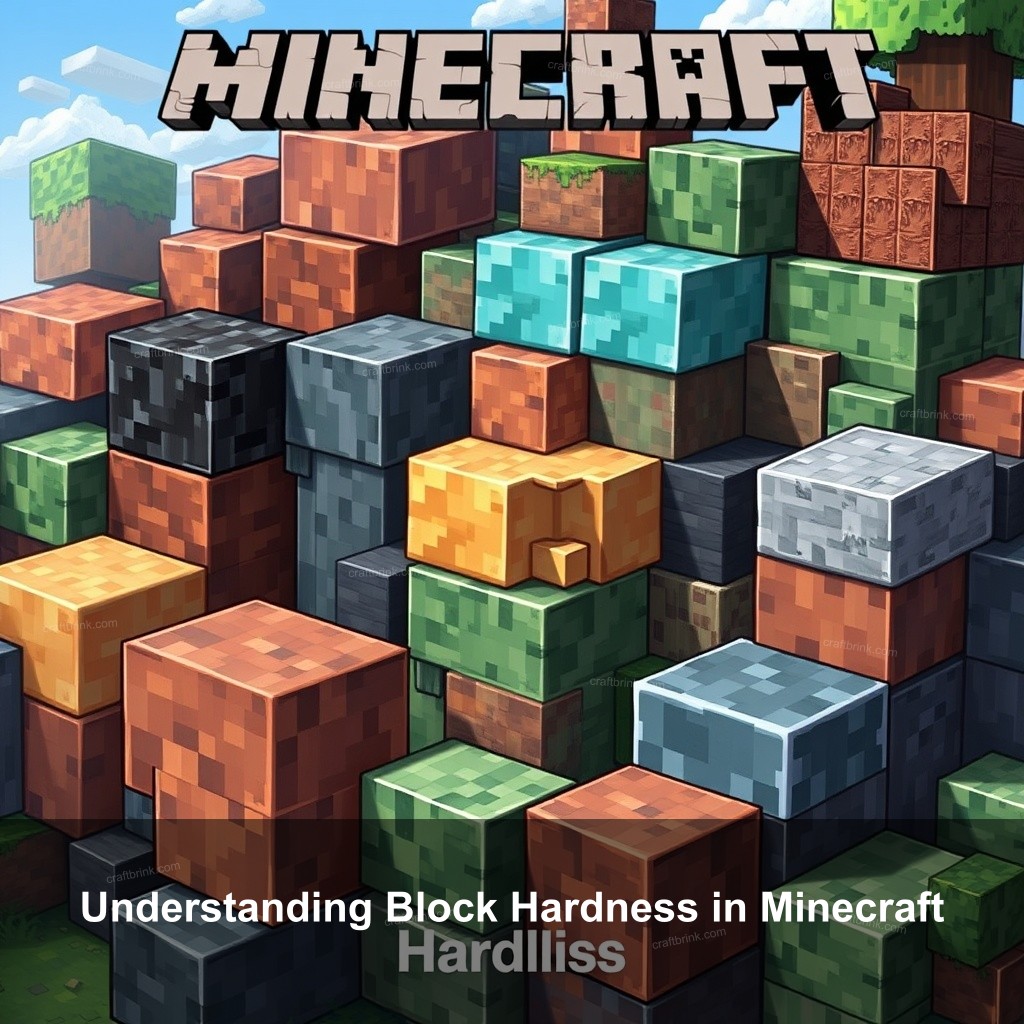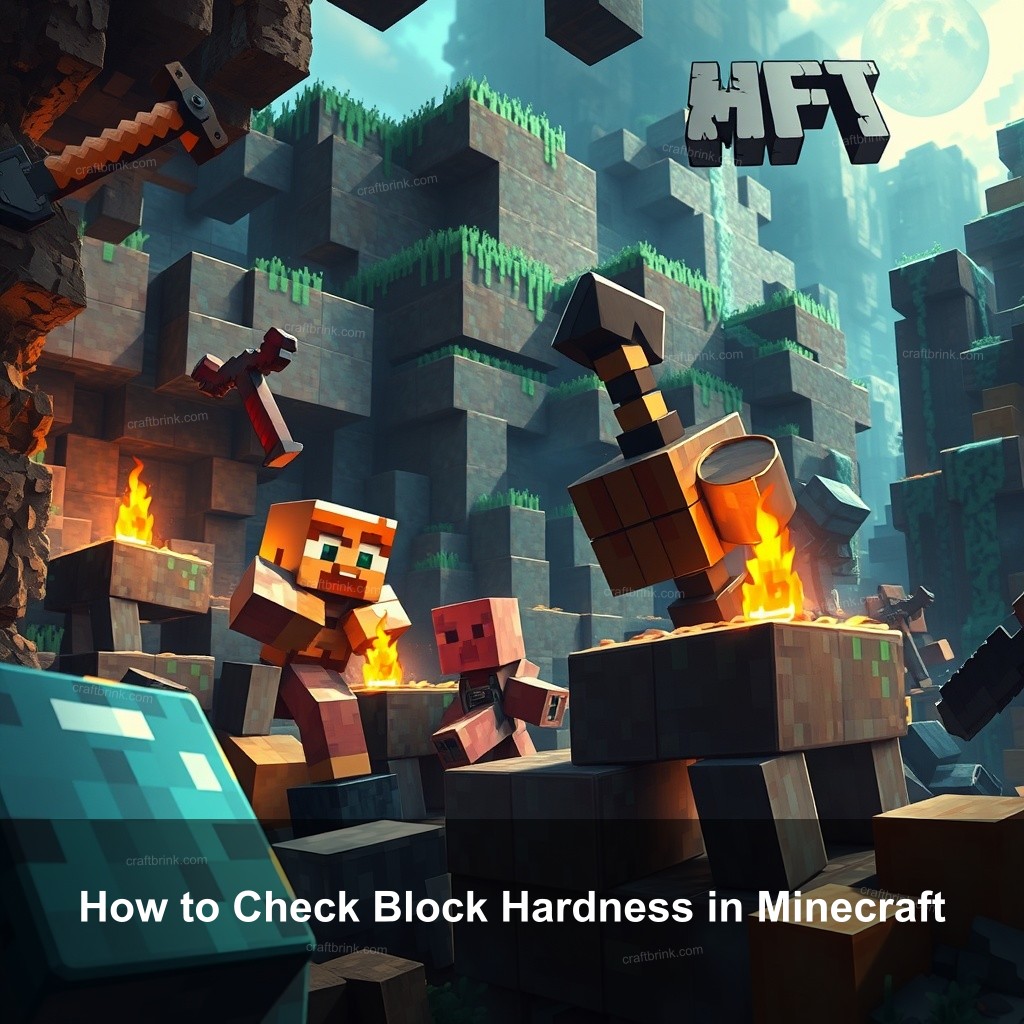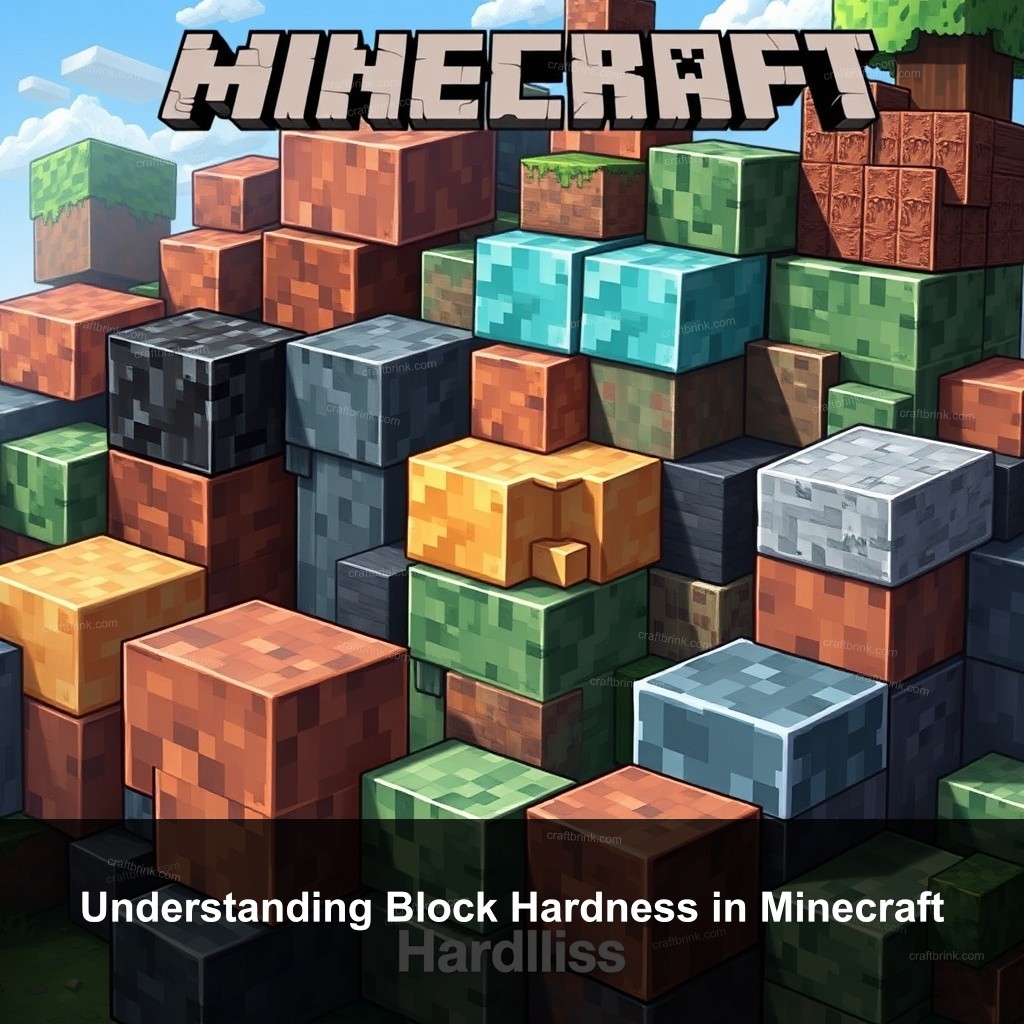Have you ever wondered why some blocks in Minecraft are tougher to break than others? The concept of block hardness is important for players aiming to gather resources efficiently and build strong structures. In this guide by CraftBrink, we will explore everything you need to know about block hardness, from basic definitions to advanced analysis techniques.

Understanding Block Hardness in Minecraft
Block hardness in Minecraft indicates how long it takes to break a block. Each block has a specific hardness value, which has a significant impact on gameplay. Some blocks take just a few seconds to break, while others, like obsidian, require much more effort and the right tools.
Hardness is key for players, especially when choosing materials for construction or resource gathering. Knowing which blocks are hard can help you plan your mining strategy effectively. For example, softer blocks like dirt can be removed quickly, making them ideal for initial resource collecting.
| Block Type | Hardness Value | Mining Tool Required |
|---|---|---|
| Dirt | 0.5 | Any |
| Stone | 1.5 | Wooden Pickaxe |
| Obsidian | 50 | Diamond Pickaxe |
| Ancient Debris | 30 | Diamond Pickaxe |
What is Block Hardness?
Block hardness is a fundamental feature in Minecraft. It dictates how quickly you can break a block using various tools. For instance, stone has a hardness of 1.5, while obsidian has a hardness of 50, meaning it takes significantly longer to mine.
This stat not only affects mining but also plays a role in crafting and survival strategies. Knowing block hardness helps you make informed decisions on which resources to mine first. For instance, if you’re looking to build a fortress, knowing that obsidian is highly resistant to explosions can be a game-changer.
The Importance of Hardness in Gameplay
Understanding the hardness of blocks influences your Minecraft experience. It affects everything from mining efficiency to building durability. Players often find that certain blocks are better suited for construction based on their hardness. Using harder blocks can improve your defenses against hostile mobs.
Furthermore, specific crafting recipes require knowledge of block hardness. For example, creating an enchanting table involves mining obsidian, which requires a diamond pickaxe due to its high hardness. This knowledge helps players prioritize their mining efforts.
Measuring Block Hardness
Measuring block hardness can be done in various ways. In-game, you can reference the Minecraft Wiki, which provides detailed hardness stats for every block. Additionally, players can use tools and commands to assess hardness directly within the game.
For instance, using commands like /give @p minecraft:command_block allows you to create setups for testing block hardness. Such tools can enhance your gameplay by enabling you to experiment with different blocks and their attributes.

How to Check Block Hardness in Minecraft
Checking block hardness is essential for players looking to optimize their resource gathering. Fortunately, several methods can assist you in checking how hard a block truly is.
In-Game Mechanics for Checking Hardness
In Minecraft, players can use specific commands and tools to determine a block’s hardness. One method involves using command blocks to create a system that checks and reports hardness values. This requires some setup but can be a fun project for players looking to enhance their gameplay.
Alternatively, you can simply reference external resources, such as the Minecraft Wiki, which lists the hardness of each block for easy access. This is often the quickest way to get the information you require.
Using External Resources and Guides
There are numerous online resources that provide information on block hardness. Websites like Minecraft forums are excellent for finding community-driven information and tips. Players often share their findings, strategies, and guides that can enhance your knowledge of block hardness.
For example, guides detailing Understanding Minecraft Block Properties can provide deeper insights into how different blocks interact within the game.
Practical Tips for Players
When checking block hardness, keep a list of common blocks and their hardness values handy. This helps streamline your mining process. For survival players, prioritizing softer blocks for initial resource gathering can save time and effort.
Consider using tools like a notepad or in-game books to track the hardness of various blocks you encounter. This personal reference can be invaluable, especially during intense gameplay sessions.
Comparing Block Hardness for Survival Strategies
Knowing how different blocks compare in hardness is important for survival gameplay. This knowledge helps players make informed decisions when it comes to building and resource gathering.
Hardness Ratings of Key Blocks
Several key blocks in Minecraft stand out due to their hardness ratings. For example, obsidian is well-known for its high durability, making it a go-to choice for players looking to build blast-resistant structures. Similarly, ancient debris, while rare, offers immense durability and is crucial for crafting netherite.
To quickly reference hardness values, consider creating a comparison table that lists various blocks and their hardness. This can be a quick guide for your future mining expeditions.
Impact on Survival Gameplay
Understanding block hardness impacts how players approach survival in Minecraft. Choosing to build with harder blocks can significantly improve your defenses against mobs. For instance, using reinforced deepslate for walls can help protect your base from enemy attacks.
Additionally, prioritizing mining efforts based on hardness can improve your resource management. Knowing which blocks yield the best materials for survival can streamline your gameplay.
Evaluating Block Hardness for Resource Gathering
Resource gathering can be optimized by evaluating block hardness. For example, players should focus on softer blocks like dirt or gravel at the start of the game. As you progress, shift your attention to harder blocks that yield better resources, such as diamond or netherite.
Moreover, combining different block types can improve your overall mining strategy. For example, creating pathways with softer blocks while building defensive structures with harder blocks can be an effective approach.
Block Hardness Effects on Gameplay
The effects of block hardness ripple through various aspects of gameplay. From combat strategies to environmental interactions, understanding these effects can enhance your Minecraft experience.
The Role of Hardness in Combat Scenarios
Block hardness plays a crucial role in combat scenarios within Minecraft. Understanding how mobs interact with different blocks can give you a competitive edge. For example, creepers cannot destroy reinforced deepslate, allowing you to build strategically.
Using harder blocks for construction can deter enemy attacks, making it a practical choice for any player looking to safeguard their territory.
Environmental Considerations
Block hardness also affects how blocks react to environmental factors. For example, softer blocks like wood are susceptible to fire, whereas obsidian remains strong against such threats. This knowledge informs your building choices and helps players create safe spaces.
Additionally, different biomes contain blocks with unique hardness properties. Being aware of these variations can help you strategize resource gathering more effectively.
Advanced Hardness Analysis Techniques
For players looking to deepen their grasp of block hardness, advanced analysis techniques can prove useful. These methods allow you to explore the details of how blocks behave.
Using Commands for Block Analysis
Commands can significantly improve your gameplay by providing insights into block hardness. Players can set up command blocks to analyze different blocks’ properties and behaviors. This method can be particularly useful for creating custom maps or scenarios.
For example, setting a command to report the hardness of selected blocks can save time and improve your strategic planning.
Programming Custom Data Packs
If you’re comfortable with coding, consider creating custom data packs that modify block interactions based on hardness. This approach allows players to personalize their gameplay experience further and can lead to innovative strategies.
As you experiment with programming, keep an eye on how different blocks interact within your modded gameplay. This improved understanding can yield a more fulfilling Minecraft experience.
FAQs
What is block hardness in Minecraft?
Block hardness refers to the time and effort required to break a block in Minecraft. Each block has a specific hardness value that affects gameplay.
How do I check block hardness?
You can check block hardness using commands, consulting the Minecraft Wiki, or through in-game mechanics that report block properties.
What are the hardest blocks in Minecraft?
Obsidian, reinforced deepslate, and ancient debris are among the hardest blocks in Minecraft, making them ideal for defensive structures.
How does hardness affect resource gathering?
Understanding block hardness helps players prioritize which blocks to mine and guides them in choosing the right tools for effective resource collection.
Why is block hardness important for survival?
Block hardness influences gameplay by affecting building strategies, resource management, and combat scenarios, enhancing a player’s overall survival experience.
Conclusion
Grasping block hardness in Minecraft is important for optimizing your gameplay. By learning about the properties of various blocks, you can improve your strategies, whether for building, mining, or combat. We encourage you to share your experiences and insights in the comments and explore more content on our site. Visit CraftBrink for additional guides and tips!
